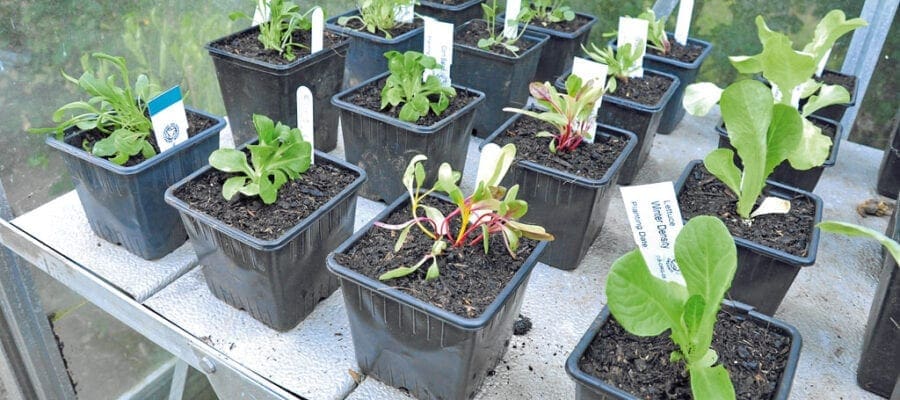
Sowing seeds isn’t the only way to raise the plants you need to achieve great harvests. Plug plants offer a convenient alternative to buying seeds, or as away to fill gaps or top up numbers if sowings fail for any reason.
What is a plug plant?
A plug plant is so called because the seeds are sown into ‘plugs’ of compost by the nursery producing them. The seedlings are grown on in the plugs until they are at the perfect stage to be planted out.
There is sufficient volume of compost to keep the plant happy in its early stages and the little plugs are a convenient way of sending plants to the customer while ensuring that they remain in good condition in the post.
Specialist producers offer pre-grown seedlings of vegetables at a time of year when they are perfect for planting and this is particularly handy if you only require a few plants of each type or don’t have the facilities, or the confidence to sow your own.
Plug plants offer a great way to produce your own homegrown crops. They are especially good if you have limited space in which to propagate your own plants, particularly tender subjects such as tomatoes, aubergines and peppers and if your thumbs are less than green when it comes to raising plants from seed, they do take the worry out of this most difficult part of the process.
They can be very good value for money too, since although the initial outlay may seem high, there is no need to buy seeds, some of which are expensive in themselves and many of which will be surplus to requirements. They are also very useful to fill gaps –gaps in your sowing programme where you simply forgot to sow those seeds you have been hoarding on time, but also gaps in the plot left by harvested crops.

You can also often pick up a bargain on the web pages of plug plant suppliers on some crops to help you make the most of sudden empty spaces when there is no time to start from scratch with seeds.
Some specially produced plants and heritage varieties are only available via plugs –such as the highly productive grafted plants from suppliers such as Suttons and DT Brown.
Plug plants by post
When your plug plants arrive:
1. Unpack them immediately and if you can’t plant straight away, make sure the compost is moist, watering if necessary.
2. Stand them in a warm (temperature depending on the plant in question), light position until you are able to plant them or pot them on. Alternatively if you have a frost-free greenhouse, cold frame or polytunnel, they can go in there.
3. Plant or pot on as soon as possible – certainly within a day or two of receiving them.
4. Plant or pot to just cover the rootball with fresh compost. Tomatoes can be buried right up to the first leaves.
5. Water well.
6. Your young plants will almost certainly have been produced in a frost-free greenhouse, so do be sure to harden them off properly prior to planting.











